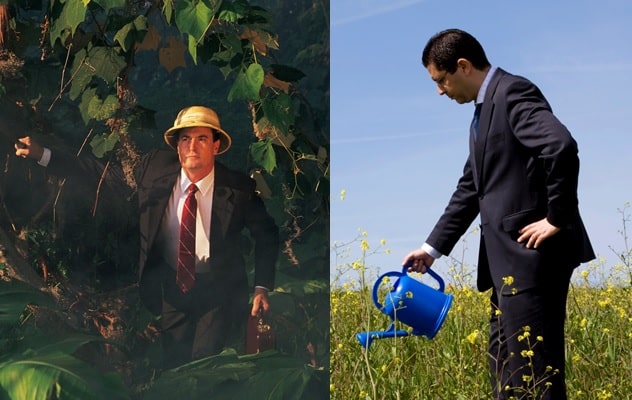One of my favorite things about working at DB&A is the collaboration I have with my colleagues. It can be so much fun to bounce ideas off each other and learn from my teammates.
Recently, I was on a site visit Cole Costanzo, SVP at DB&A. Cole was explaining to the client how major gift development works. He shared an analogy that really resonated with the client (and me).
“Major gift development is farming not big game hunting.”
With such a simple statement Cole said so much. Unfortunately, many people assume that raising major gifts is big game hunting: find the donor, ask the donor, drag the gift home. When you are hungry again, you return to your hunting blind.
However, the best major gift fundraising is more nuanced than that. The rules are different, so put down your gun and pick up a trowel. Major gift development is about carefully tending to relationships to produce a great harvest. Like the cultivation of apple trees, the hope is that well-tended, there would be multiple harvests, year over year. Just as there is a long season of cultivation and a short season of harvest, major donor giving follows a cycle.
Planting Seeds (Acquisition)
It all starts with planting seeds. Here you are identifying prospective donors, introducing your agency to them, conducting research to identify ability, affinity, and access.
Cultivation (Cultivation)
The farmer of an orchard needs to pay careful attention to the trees to protect the growing fruit from freezing and pests and to nourish them with fertilizer and water. Likewise, a major gift officer needs to consider the best conditions for a donor to thrive. Neglect and misinformation can hinder the relationship with the donor. Instead, the donor needs regular donor visits and communications between meetings (what we call Impact Messaging). The cultivation process also includes lots of listening to the donor to best understand when and how to approach the harvest.
Harvest (Solicitation)
After significant investment in your orchard of donors, at just the right time it is time for the harvest. But did you know that if you pick an apple the wrong way, you will “reduce apple production the following year”? Likewise, your approach to your donor will impact not just their generosity for an immediate gift but future gifts as well. We have multiple blog articles on the “Art of the Ask”, so I won’t go into it here. However, be advised: how, when, for what, and how often you ask matters.
Pruning (Stewardship)
Fruit trees need pruning after the harvest to concentrate their resources on producing the greatest yield. Donors need stewardship in response to their gift to close the giving cycle. Stewardship requires more than simply sending a thank you and a receipt. Good stewardship requires sharing the impact of your donor’s generosity.
Cultivation, Harvest, Pruning, etc.
At the completion of one season, it is time to enter the next season. Well cultivated, your donor’s giving will mature over time.
If you are approaching with the wrong mindset, your results will suffer. If you are lucky, a hunter-gather mindset might be effective momentarily. However, for long-term sustainability, there is nothing like a farming approach.


